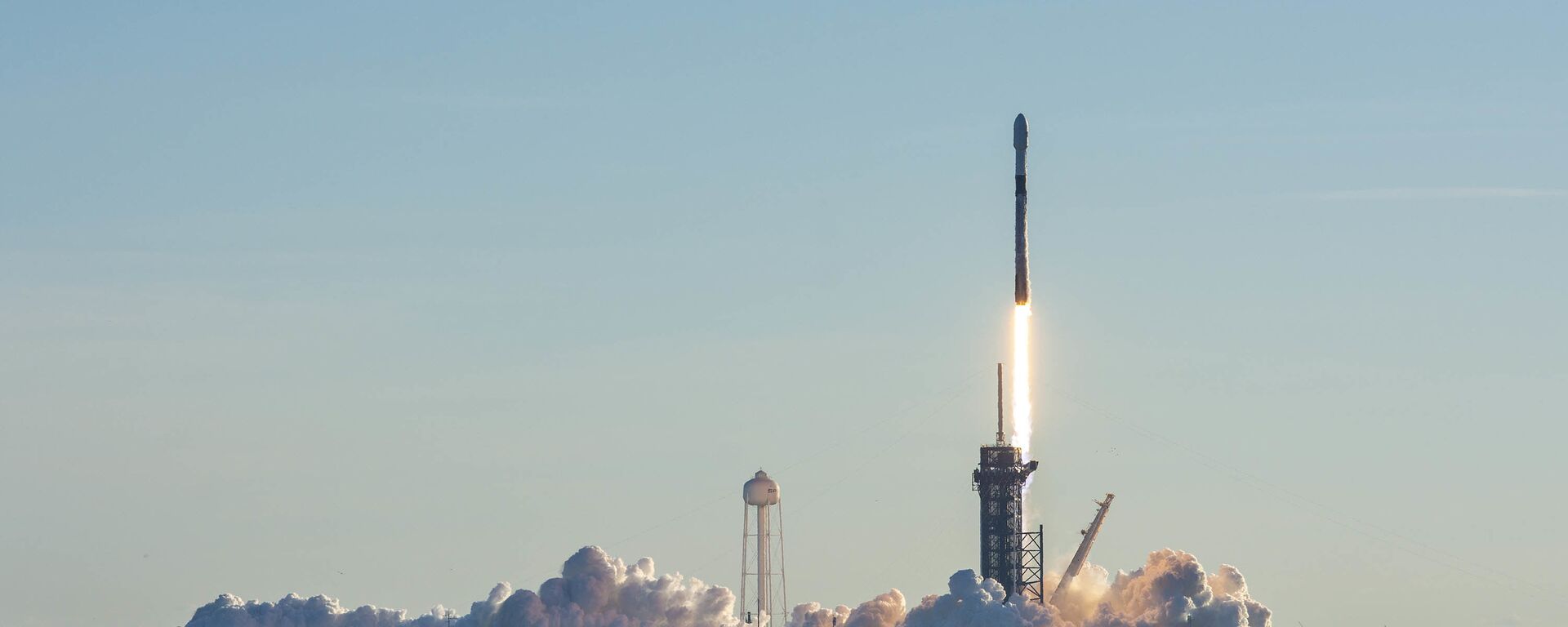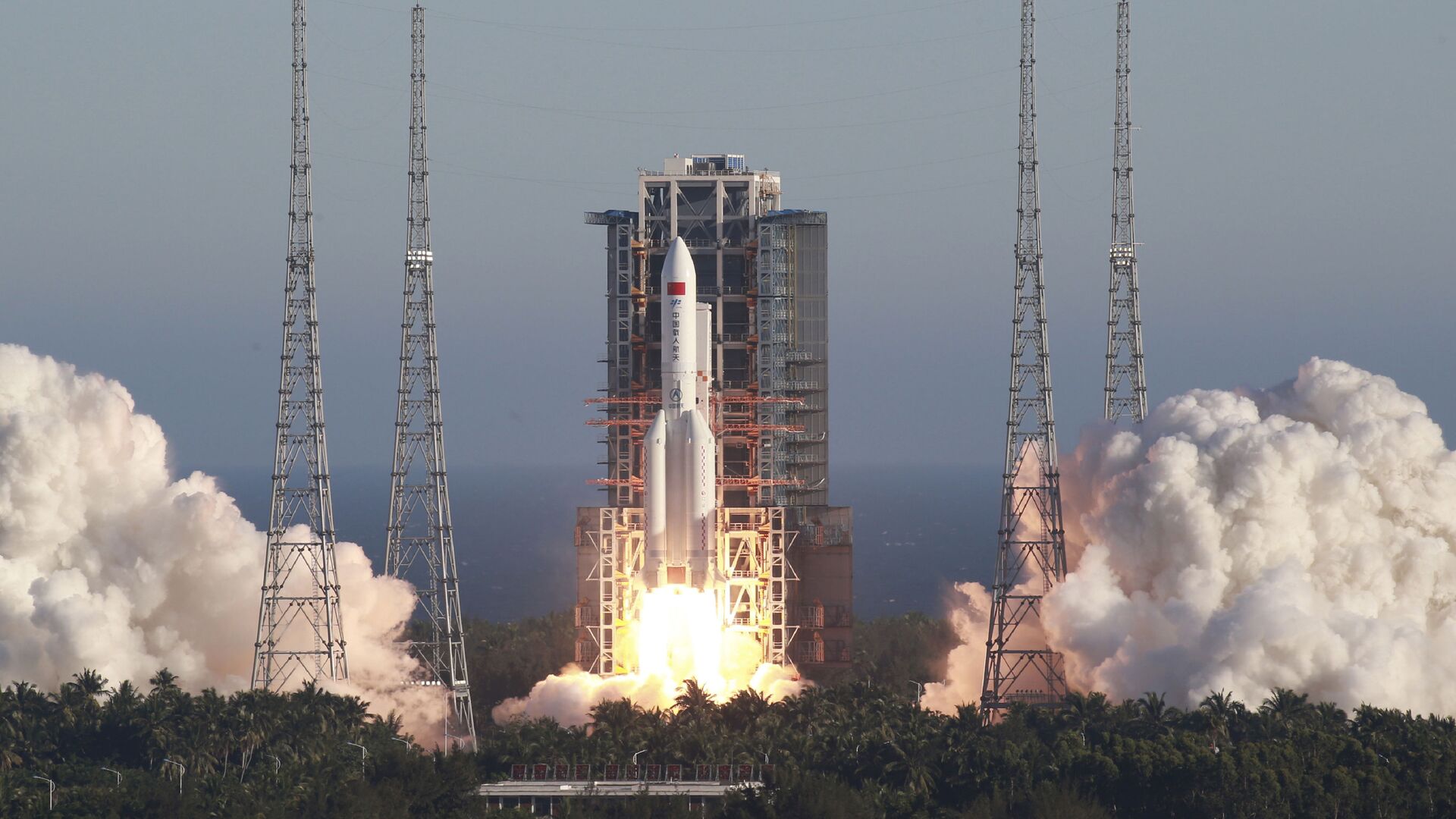https://sputnikglobe.com/20230224/china-reportedly-preparing-to-launch-13000-satellite-network-to-suppress-starlink-supremacy-1107776910.html
China Reportedly Preparing to Launch 13,000-Satellite Network to ‘Suppress’ Starlink Supremacy
China Reportedly Preparing to Launch 13,000-Satellite Network to ‘Suppress’ Starlink Supremacy
Sputnik International
China is reportedly looking to create its own low Earth orbit (LEO) constellation of internet satellites to challenge Starlink’s domination of the field... 24.02.2023, Sputnik International
2023-02-24T17:02+0000
2023-02-24T17:02+0000
2023-02-24T18:43+0000
spacex
starlink
china
satellite
asia
https://cdn1.img.sputnikglobe.com/img/07e4/09/06/1080379699_0:160:3073:1888_1920x0_80_0_0_bf7661db0cf52086c14fd1b824c690bb.jpg
According to the report, which cites a recent article published in the Chinese journal Command Control and Simulation, China Satellite Network Group has plans to quickly put 12,992 satellites in orbit.The team, led by Xu Can, an associate professor at the People’s Liberation Army’s (PLA) Space Engineering University in Beijing, aims to do so “before the completion of Starlink,” he said. This would “ensure that our country has a place in low orbit and prevent the Starlink constellation from excessively pre-empting low-orbit resources”, Xu’s team wrote in the journal article.At present, Starlink has more than 3,000 satellites in orbit. By 2027, it aims to have 12,000 satellites, but it has plans for as many as 30,000 satellites.They suggested that Beijing cooperate with other governments to pressure SpaceX to publish precise data on every Starlink satellite, including its orbital data, and they could build powerful radar systems capable of tracking Starlink satellites, which orbit about 342 miles above the Earth. Further down the line, directed-energy weapons like lasers or high-powered microwaves could be used to disable Starlink satellites if necessary, they said.Aside from such theories, Chinese academics have highlighted the danger that thousands of Starlink satellites already pose in space. A report published last November in the Chinese peer-reviewed journal Radio Engineering accused SpaceX of routinely disregarding widely respected but informal “rules of the road” in space and urged the creation of a more formal framework for space safety. The Chinese space station Tiangong was forced to alter course multiple times in recent years to avoid a potential collision with a Starlink satellite.In April 2020, China’s National Development and Reform Commission (NDRC) added “satellite internet” to a list of “new infrastructures” to be supported by local and provincial-level initiatives. China’s 14th Five-Year Plan, adopted in early 2021, also named building an integrated network of communication, observation, and navigation satellites as part of its “long-range objectives through 2035.”
https://sputnikglobe.com/20230213/musk-confirms-kiev-wont-be-allowed-to-weaponize-starlink-satellites-that-may-lead-to-ww3-1107388273.html
https://sputnikglobe.com/20221020/musk-says-spacex-placed-more-active-satellites-in-orbit-than-rest-of-earth-combined-1102459784.html
china
Sputnik International
feedback@sputniknews.com
+74956456601
MIA „Rossiya Segodnya“
2023
News
en_EN
Sputnik International
feedback@sputniknews.com
+74956456601
MIA „Rossiya Segodnya“
Sputnik International
feedback@sputniknews.com
+74956456601
MIA „Rossiya Segodnya“
spacex, starlink, china, satellite
spacex, starlink, china, satellite
China Reportedly Preparing to Launch 13,000-Satellite Network to ‘Suppress’ Starlink Supremacy
17:02 GMT 24.02.2023 (Updated: 18:43 GMT 24.02.2023) China is reportedly looking to create its own low Earth orbit (LEO) constellation of internet satellites to challenge Starlink’s domination of the field, according to reports in Chinese media on Friday.
According to the report, which cites a recent article published in the Chinese journal Command Control and Simulation, China Satellite Network Group has plans to quickly put 12,992 satellites in orbit.
That is in keeping with filings made with the UN-affiliated International Telecommunications Union in 2020 that indicated China’s plans to build a 13,000-satellite communications network.
The team, led by Xu Can, an associate professor at the People’s Liberation Army’s (PLA) Space Engineering University in Beijing, aims to do so “before the completion of Starlink,” he said. This would “ensure that our country has a place in low orbit and prevent the Starlink constellation from excessively pre-empting low-orbit resources”, Xu’s team wrote in the journal article.

13 February 2023, 22:22 GMT
SpaceX, which operates the Starlink service, has already put thousands of small satellites into LEO to provide high-speed internet around the globe. Because of their low altitude, far more are needed to extend service over a wider area, meaning Starlink has already multiplied the number of human-made satellites in orbit by several times by undertaking the program.
At present, Starlink has more than 3,000 satellites in orbit. By 2027, it aims to have 12,000 satellites, but it has plans for
as many as 30,000 satellites.
According to the researchers, the Starlink constellation poses a threat to other nations’ satellites because the Pentagon, with which SpaceX contracts, can order the company to have its Starlink satellites “actively hit and destroy nearby targets in space.”
They suggested that Beijing cooperate with other governments to pressure SpaceX to publish precise data on every Starlink satellite, including its orbital data, and they could build powerful radar systems capable of tracking Starlink satellites, which orbit about 342 miles above the Earth. Further down the line,
directed-energy weapons like lasers or high-powered microwaves could be used to disable Starlink satellites if necessary, they said.

20 October 2022, 12:23 GMT
Aside from such theories, Chinese academics have highlighted the danger that thousands of Starlink satellites already pose in space. A report published last November in the Chinese peer-reviewed journal Radio Engineering
accused SpaceX of routinely disregarding widely respected but informal “rules of the road” in space and urged the creation of a more formal framework for space safety. The Chinese space station Tiangong was
forced to alter course multiple times in recent years to avoid a potential collision with a Starlink satellite.
However, the issue isn’t just competition with or dangers posed by SpaceX, it’s also part of the Chinese government’s long-term plans for building a modern socialist society.
In April 2020, China’s National Development and Reform Commission (NDRC) added “satellite internet” to a list of “new infrastructures” to be supported by local and provincial-level initiatives. China’s 14th Five-Year Plan, adopted in early 2021, also named building an integrated network of communication, observation, and navigation satellites as part of its “long-range objectives through 2035.”




